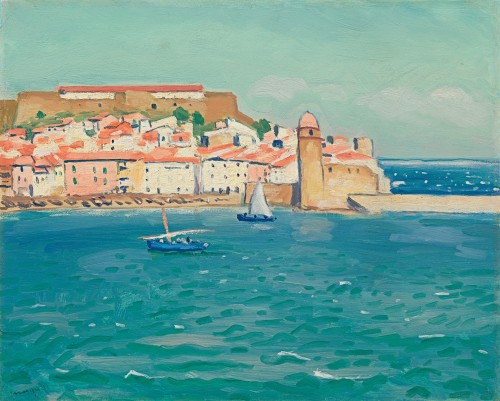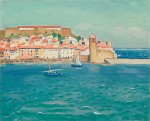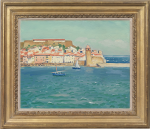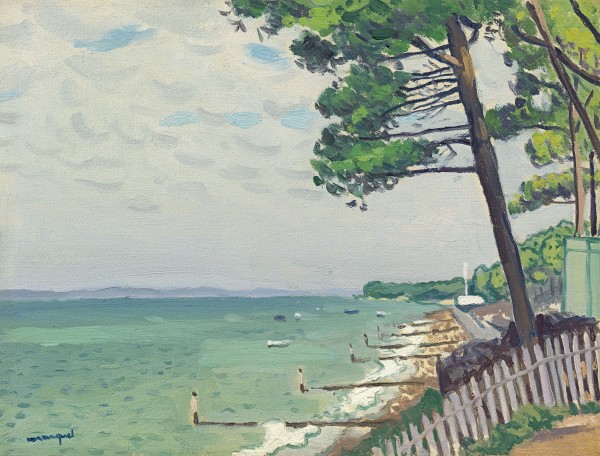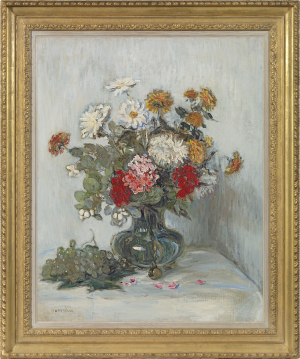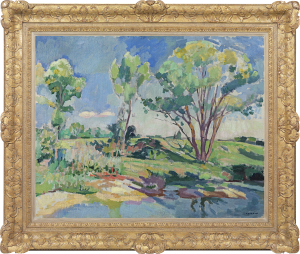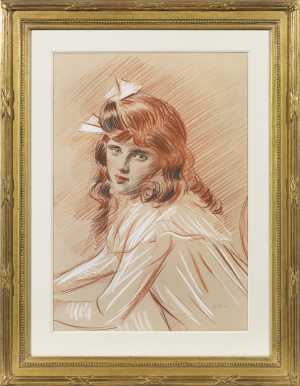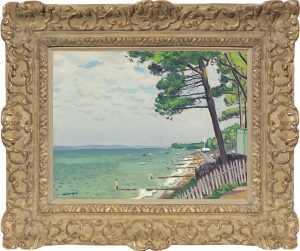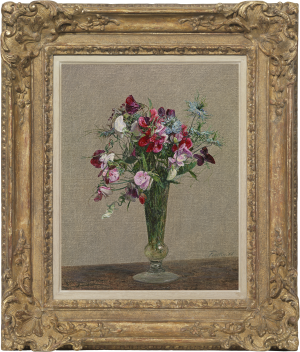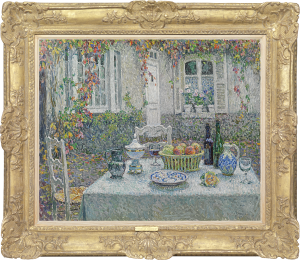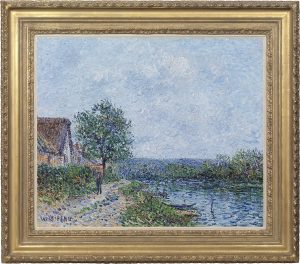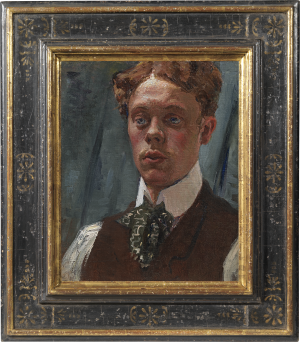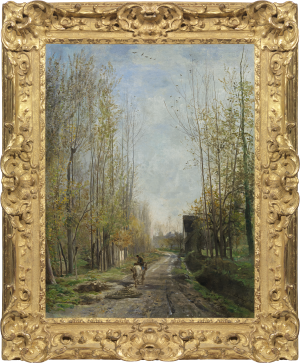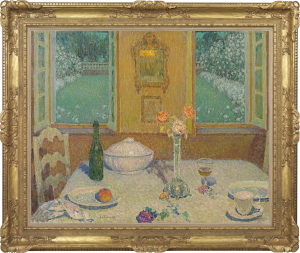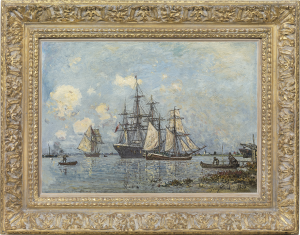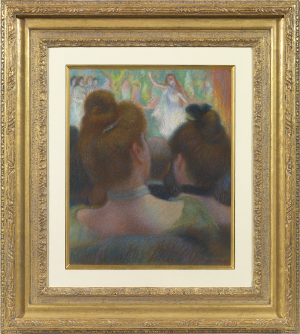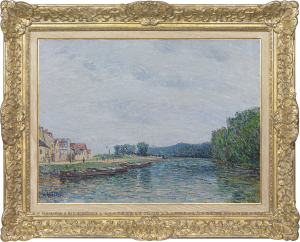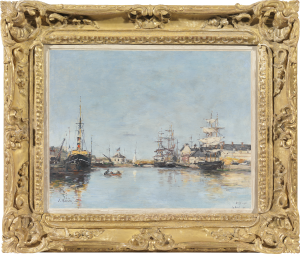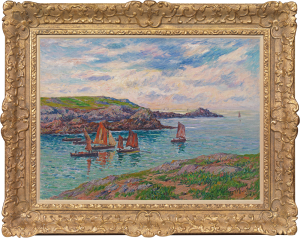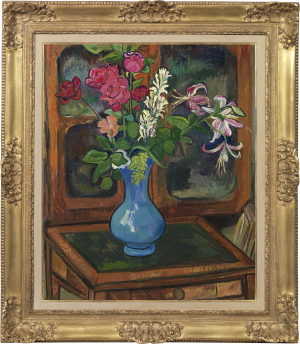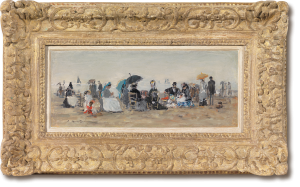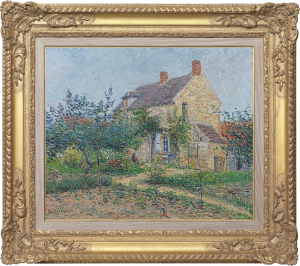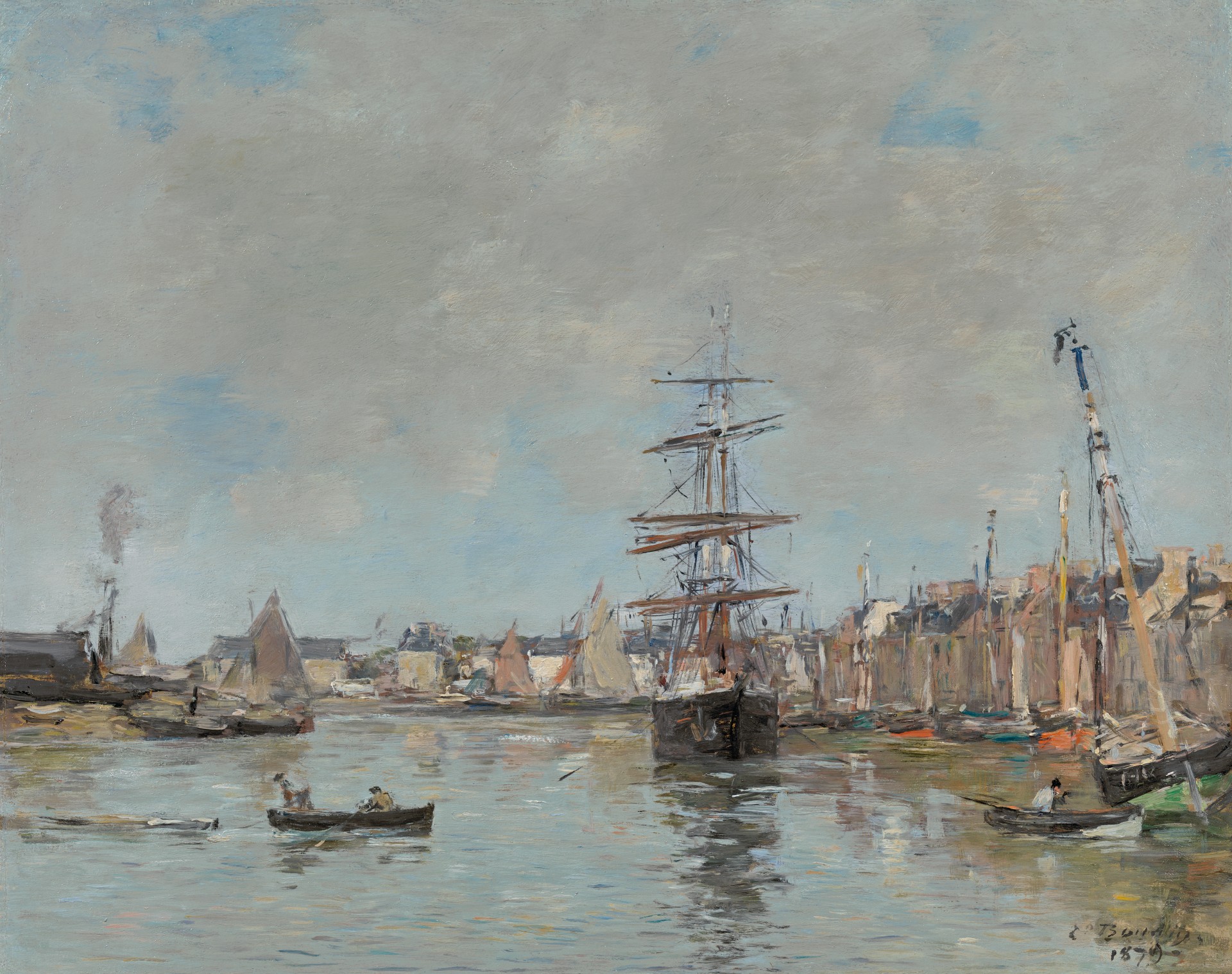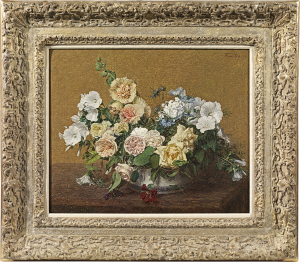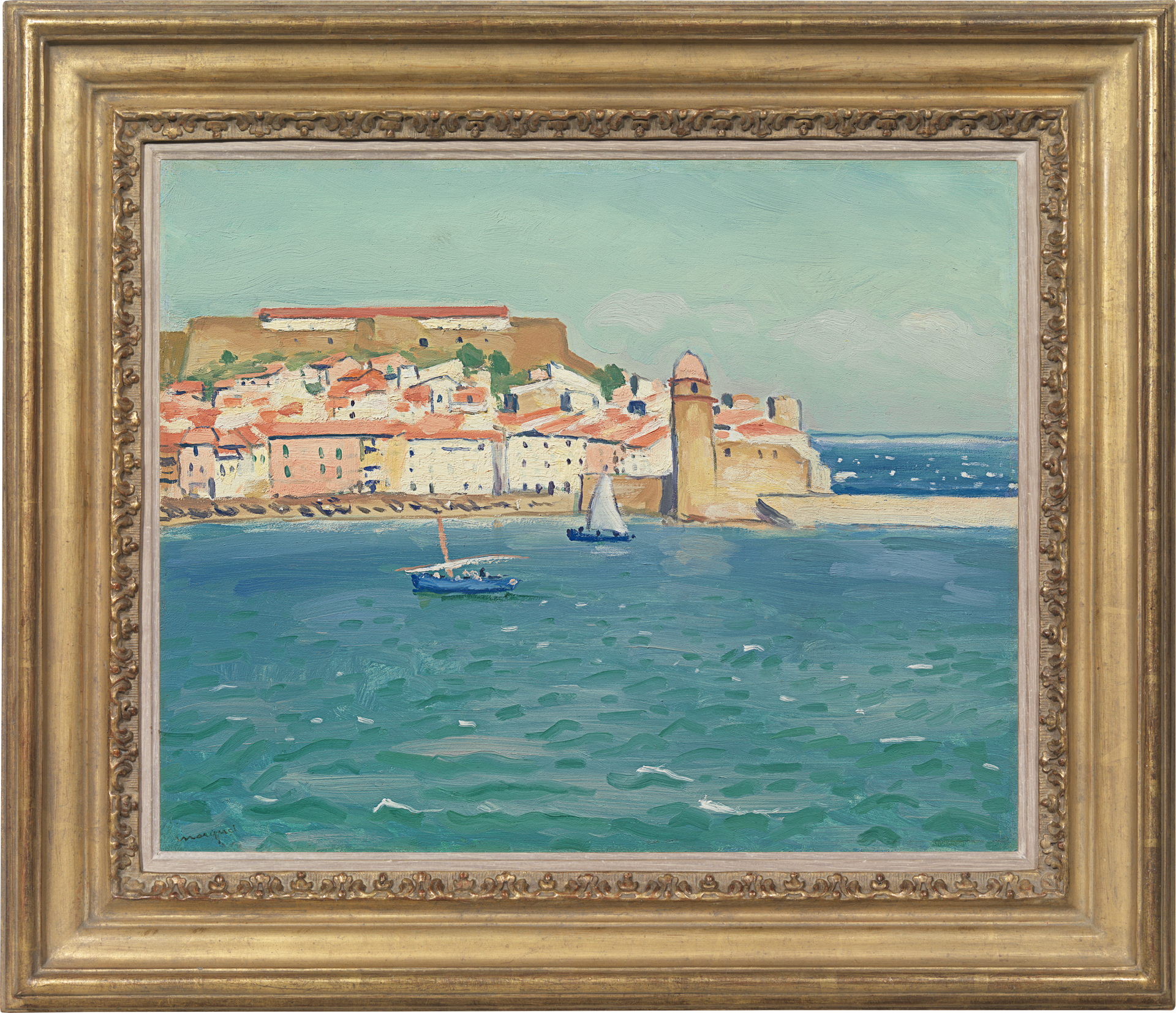Albert Marquet
Mer agitée à Collioure
Oil on panel: 13 x 16.3 (in) / 33 x 41.3 (cm)
Signed lower left: marquet
This artwork is for sale.
Please contact us on: +44 (0)20 7493 3939.
Email us
ALBERT MARQUET
Bordeaux 1875 - 1947 Paris
Ref: BZ 182
Mer agitée à Collioure
Signed lower left: marquet
Oil on panel: 13 x 16 ¼ in / 33 x 41.3 cm
Frame size: 18 ¾ x 21 ¾ in / 47.6 x 55.2 cm
Painted in 1940
Provenance:
R Petel, by 1954
Galerie des Granges, Geneva;
From whom acquired by a private collector, Lausanne;
by descent in a private collection, Switzerland
Exhibited:
Toulouse, Musée des Augustins, Albert Marquet, 19th June-18th July 1954, no.39 (as Collioure, lent by R Petel)
To be included in the forthcoming Digital Catalogue Raisonné of the work of Albert Marquet currently being prepared by the Wildenstein Plattner Institute, Inc., ref. 20.04.20/20834
This painting demonstrates Albert Marquet’s skills as a colourist: Mediterranean light and heat pour out of this canvas. The choppy sea grades from sapphire blue to turquoise, contrasting with the salmon pink, terracotta and dazzling white buildings of the old town. Behind, the sky is a hazy eau-de-nil green, with the palest of pink clouds building at the horizon, perhaps harbingers of a thundery shower that will cool the land.
André Rouveyre, a fellow student in Gustave Moreau’s atelier, wrote: ‘Marquet reigns over the kingdom of light. The light that shines on the things of this world, of course, but also that which belongs to his pictures alone: a strangely regal quality that comes from his sensitivity and wisdom’.
Marquet depicts the view towards Collioure’s harbour wall with the medieval lighthouse and the church of Nôtre-Dame-des-Anges behind. A Catalan town fifteen miles from the French-Spanish border, Collioure had a crucial place in the history of French art. Paul Signac stayed in the town in 1887; Picasso, Dufy and Chagall were all attracted to Collioure. Derain and Matisse painted ground-breaking Fauve works there in 1905, using bold, anti-naturalistic colours, flat planes and simplified compositions. Marquet associated with the Fauves as a young man and was a lifelong friend of Matisse; his later work, although more subtle in colouring, retains the bold compositions and vibrancy first explored in his Fauve period.
For centuries Collioure was of strategic importance, squabbled over by the kingdoms of Aragon, Majorca, Spain and France, to which it was finally ceded in 1659. The Royal Castle, built in the thirteenth and fourteenth century by the Kings of Majorca, was reinforced to its present outline by Philip II of Spain in the sixteenth century. By the nineteenth century Collioure was a modest fishing port and a centre for anchovy salting and canning; its unspoiled beauty attracted increasing numbers of visitors as the twentieth century progressed.
ALBERT MARQUET
Bordeaux 1875 - 1947 Paris
Albert Marquet was born in Bordeaux in 1875, the son of a railway employee. He went to Paris to study at the Ecole des Arts Décoratifs at the age of fifteen. Six years later he joined the studio of Gustave Moreau, where he met and forged lasting friendships with Camoin, Rouault, Manguin and Matisse. During this period Marquet began to use the vibrant colours and bold brushwork that is characteristic of the Fauves with whom he was closely associated. He exhibited at Berthe Weill and the Galerie Druet, Paris from 1902 and from 1903 at the Salon d’Automne.
After 1907 Marquet’s interest in Japonisme resulted in more sober works. He travelled extensively, frequently leaving his apartment on the banks of the Seine to visit England, Germany, Italy, the USSR, Scandinavia and North Africa, where he spent the years of the Second World War. He met his wife Marcelle Martinet, whom he married in 1923, on his first stay in Algiers in 1920.
The most profound influence on his work is that of the Impressionists, most notably Paul Cézanne. Like the Impressionists his favourite subjects were port scenes, beaches, quaysides, river views and coastal villages; he was particularly fascinated by the effect of light on water.
André Rouveyre, a fellow student in Gustave Moreau’s atelier, wrote: ‘Marquet reigns over the kingdom of light. The light that shines on the things of this world, of course, but also that which belongs to his pictures alone: a strangely regal quality that comes from his sensitivity and wisdom. Skies, hills, houses, streets all bathe in his subtle but intense lights’.
The work of Albert Marquet is represented in the Musée d’Orsay, Paris; the Centre Pompidou, Paris; the Musée des Beaux-Arts, La Rochelle; the Musée de Grenoble; the Hermitage, St Petersburg; Tate, London; the Metropolitan Museum of Art, New York; the Art Institute of Chicago and the National Gallery of Art, Washington DC.

